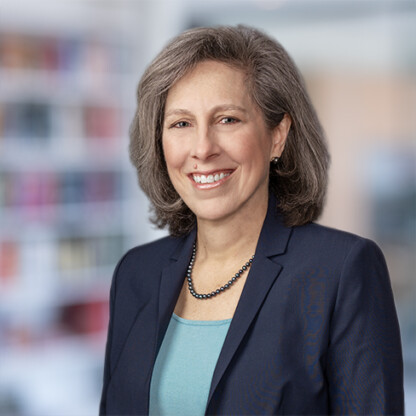Oncology Care First: What You Need to Know About the Proposed Oncology Care First Model

On November 1, 2019, the Centers for Medicare & Medicaid Services (CMS) Center for Medicare and Medicaid Innovation (Innovation Center) released a Request for Information (RFI) on the Oncology Care First (OCF) model. The Innovation Center posted the RFI in anticipation of a public listening session, held on November 4, 2019, to gather stakeholder feedback on the potential model. In this post, Foley summarizes important features of the model, analyzes the differences between OCF and the current Oncology Care Model (OCM), and summarizes key takeaways from the listening session.
According to the Innovation Center, the OCF model aims to improve health outcomes and increase the quality of care for Medicare beneficiaries. Further, OCF aims to provide participants in the model with financial incentives to eliminate volume-driven revenue cycle management without diminishing accountability for health outcomes.
The OCF model expands on the successes of the OCM and would be a voluntary, five-year model starting January 2021, when OCM is set to expire.
Key Features of the Proposed OCF
The OCF model incorporates two payment mechanisms.
1. Prospective Monthly Population Payment
OCF participants (providers) would receive a prospective monthly population payment (MPP) for evaluation and management (E&M) and drug administration services. In the RFI, the Innovation Center proposes calculating the MPP based on “historical payments trended forward . . . applied to volume and case mix in the most recently available population data.” The MPP will consider those beneficiaries with a cancer or cancer-related diagnosis who have received an E&M service.
The Innovation Center proposes including E&M and drug administration services in the MPP because these are the primary services provided by oncology offices. However, the Innovation Center is also considering including imaging and laboratory services, as well. Additionally, under the proposal, there would be a separate MPP for the provision of “enhanced services.” These services include the four from the OCM, and a new fifth as follows:
- providing beneficiaries 24/7 access to a clinician who has access to beneficiaries’ medical records;
- providing certain patient navigation services;
- providing a care plan that includes the 13 Institute of Medicine Care Management Plan components;
- treating beneficiaries with therapies recognized in national clinical guidelines; and
- implementing electronic patient reported outcomes (ePROs) (a new requirement for OCF).
Finally, the MPP would take into account different spending patterns based on risk. Specifically, the Innovation Center would calculate a separate MPP for three different risk stratum:
- High risk: those receiving chemotherapy stratified by cancer type;
- Low risk: those receiving hormonal therapy stratified by breast, bladder, and prostate cancer; and
- Those receiving no hormonal therapy or chemotherapy for any cancer type.
2. Performance-Based Payment
In addition to the MPP payment, OCF participants would have the opportunity to receive a Performance-Based Payment (PBP) by reducing expenditures below an episode benchmark amount for six-month episodes of care. The Innovation Center would consider those Medicare beneficiaries who receive chemotherapy under Medicare Parts B or D for a cancer diagnosis of any stage when calculating the PBP. Alternatively, however, OCF participants may owe CMS a repayment if they do not reduce episode expenditures during an episode of care.
The PBP episode benchmark would be calculated based on historical Medicare payments during the baseline period. Additionally, OCF participants’ PBP may be greater if they meet the quality measures currently used in the OCM Quality Measure Set. Participants with better performance based on the OCM quality measures would receive higher PBPs or, alternatively, owe CMS less in recoupment.
Like the MPP, the PBP takes into account risk. The Innovation Center proposes three risk tracks:
- A one-sided risk track that would be available for the first two performance periods only for new participants who were not previously in OCM.
- A two-sided upside risk track.
- A two-sided downside risk track.
The Innovation Center defines risk based on the participant’s episode benchmark amount.
How Does OCF Differ from OCM?
The Innovation Center aims to build off the successes of OCM. However, OCF does differ from OCM in a few notable ways.
- OCM pays participants a Monthly Enhanced Oncology Services (MEOS) payment on top of a traditional fee-for-service (FFS) framework, and participants have the opportunity to receive a retrospective performance-based payment as well. Unlike OCM, OCF would pay participants only the MPP rather than separate Medicare FFS payments for drug administration and E&M claims.
- OCF is designed to reach a broad patient population in recognition that participants’ practices serve cancer patients undergoing a variety of treatments. For the purpose of calculating the MPP, OCF beneficiaries include patients undergoing chemotherapy only, hormonal therapy only, and those not receiving drugs but under active surveillance or cancer survivors. In comparison, OCM limits the MEOS payment to only beneficiaries receiving chemotherapy.
- Like OCM, the Innovation Center proposes using adjustments when calculating the PBP episode benchmark for those participant’s that use newly FDA approved oncology drugs which result in higher expenditures than those practices not using these drugs (called the novel therapies adjustment). However, unlike OCM, OCF would make this adjustment at the cancer type level, rather than the participant level.
Like OCM, the OCF would be a multi-payer model, with commercial payers and state Medicaid agencies partnering with the Innovation Center to align their payment models with OCF. The Innovation Center hopes that multi-payer alignment would reduce costs, improve the quality of care, allow whole practice transformation, and remove any burdens to innovation.
What Did Stakeholders at the Listening Session Think?
The majority of stakeholders active during the listening session represented provider groups currently participating in OCM or professional associations. There were several aspects of the proposed OCF model that stakeholders were especially eager to discuss at the listening session.
- Risk: Stakeholders were vocal regarding their concern with the Innovation Center’s proposal that current OCM participants would be required to undertake two-sided risk during the duration of their participation in OCF. In particular, stakeholders vocalized their concern that participants differ in terms of the amount of risk they can take on. In response, the Innovation Center emphasized that participation in OCF is voluntary.
- ePros: Stakeholders at the listening session had differing perspectives on the benefit of providing an additional MPP for the use of ePROs. In particular, stakeholders expressed concern regarding whether ePROs would be administered at the point of care, which would be helpful for those patients that need assistance or would be unlikely to complete the required survey otherwise, but would be expensive for participants. Stakeholders further urged the Innovation Center to consider how geographic elements and social determinants may impact the ability to successfully collect ePROs. Lastly, stakeholders discussed the logistical and financial difficulty of implementing ePROs into existing electronic health record systems.
In conclusion, OCF reflects the Innovation Center’s continued shift away from FFS towards value-based payment programs. While the RFI was informal in nature, some speculate that a proposed rule may already be in the works. The RFI was long awaited, and while it gives insight into the next steps, it leaves a number of questions that will need to be answered. Interested parties are encouraged to submit their feedback on the RFI by Friday, December 13, 2019 to [email protected].
Want to Learn More?
Join us for a deeper discussion of the Oncology Care First Model during the Association of Community Cancer Centers & Cancer Center Business Summit taking place from March 4-6, 2020 in Washington, DC. Learn more and register for the program here.
